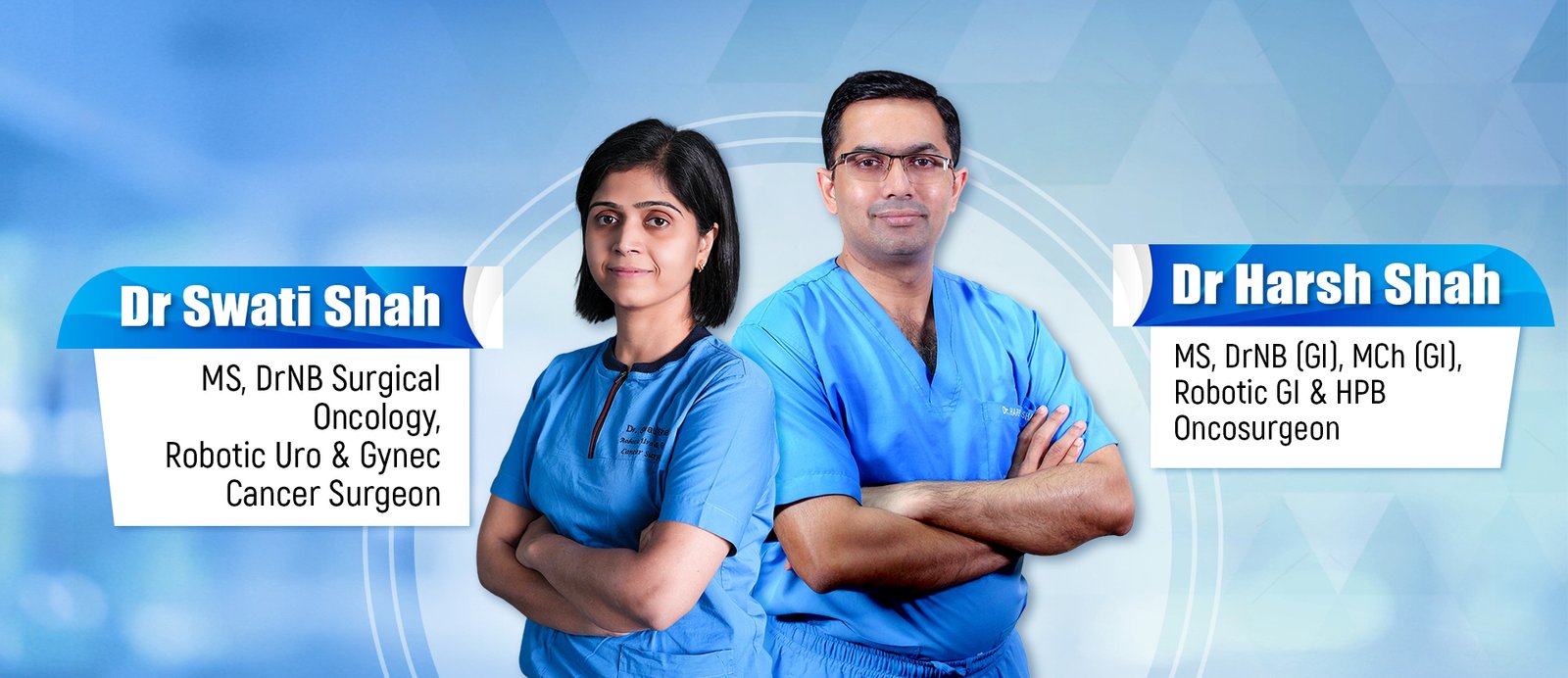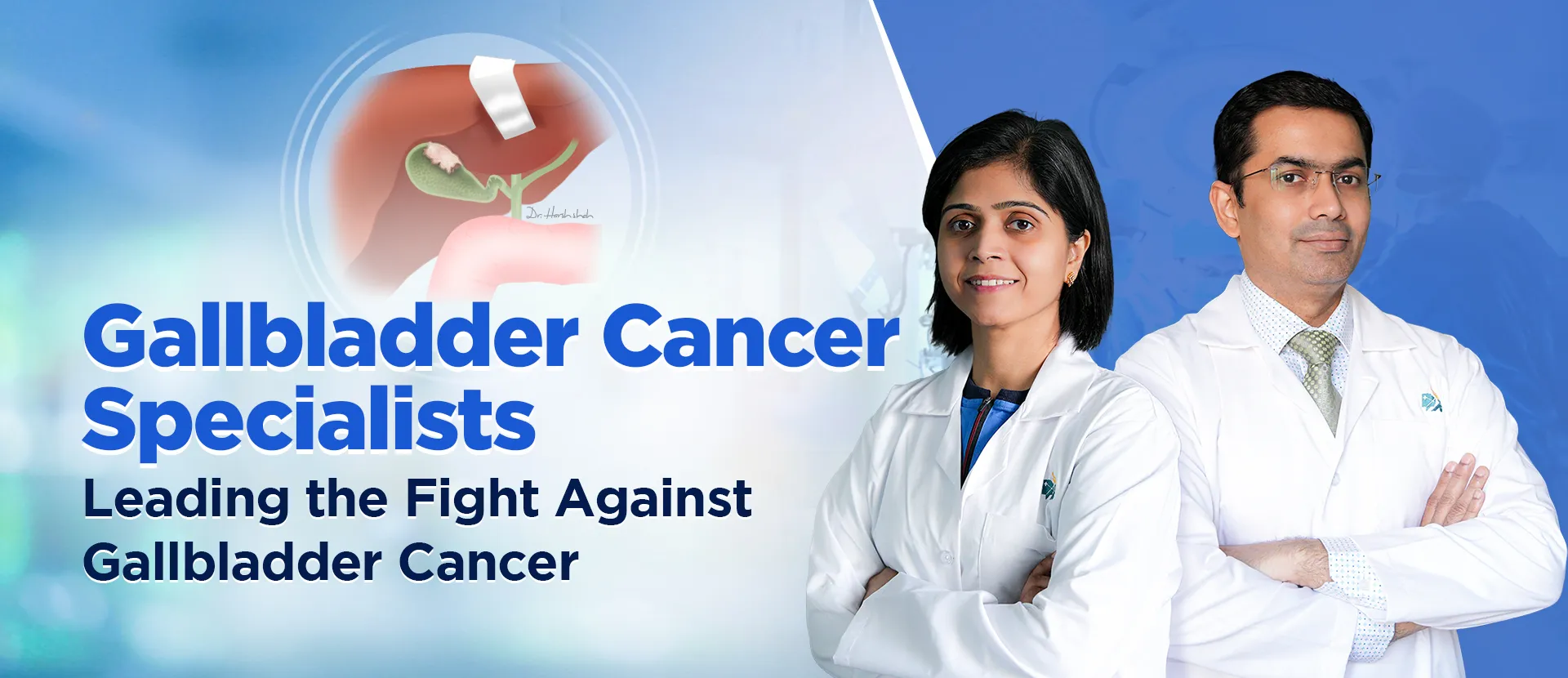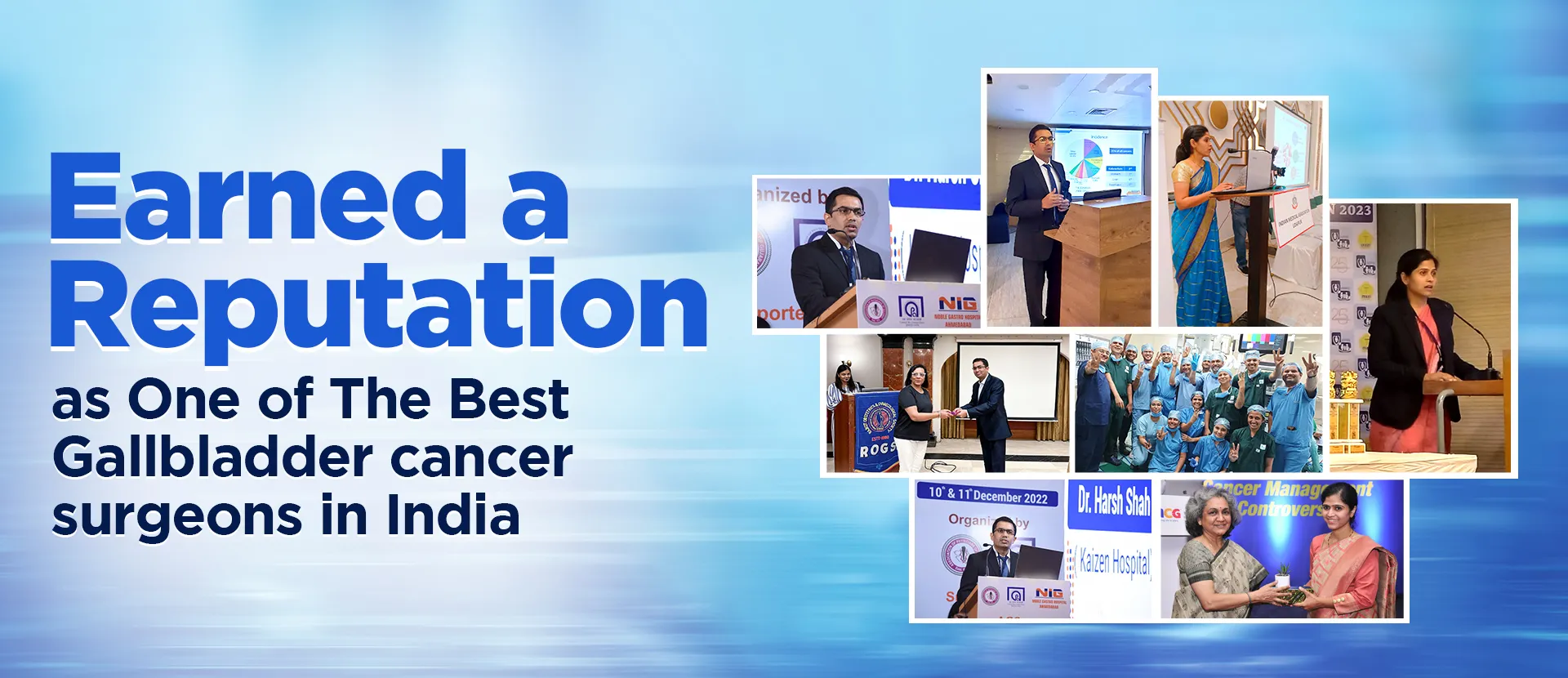Gallbladder Cancer Surgery in
Ahmedabad

- Center of Excellence for Cancer Surgeries
- Management of all Gallbladder Tumours
- 15+ years in Gallbladder Surgeries

Gallbladder cancer is a rare yet serious illness needing specialized care. For hest gallbladder cancer surgery in Ahmedabad, consider Dr. Harsh Shah. With over 15+ years of expertise and a remarkable record of successful treatments as a oncologist. He is renowned for his skill and compassionate care, making him a trusted choice for patients.
11750+ Patients
11750+ Patients have been successfully treated
15+ Years
15+ years of experience as a
gallbladder cancer specialist
24 + Awards
24+ Awards received by Dr. Shah for his achievements

Dr. Harsh Shah
MS, DrNB(GI), MCh(GI)
Meet
Dr. Harsh Shah
- Leading GI & HPB Robotic Cancer Surgeon in India
- 15+ years of experience in treating various types of Gastrointestinal cancers
- Successfully treated many Gallbladder cancer patients with Radical Cholecystectomy
Management of Gallbladder cancer involves proper diagnosis & early treatment.
Diagnosis is performed with a CT Scan & staged with a PET-CT Scan.
The treatment involves an operation to remove part of the Gallbladder along with part of the liver

What is Gallbladder Cancer?
Gallbladder cancer can often be challenging to detect early because it frequently does not cause specific symptoms in its initial stages. However, as the cancer progresses, symptoms might appear, which include:
Abdominal Pain: Particularly in the upper right section of the abdomen, which may be severe and persistent.
Jaundice: Yellowing of the skin and whites of the eyes, which occurs when the cancer blocks the bile ducts.
Nausea and Vomiting: These can be general symptoms but may occur more frequently as the disease progresses.
Bloating: A feeling of fullness or swelling in the abdomen, often due to the accumulation of fluids or a mass.
Fever: Sometimes accompanied by night sweats or chills.
Unexplained Weight Loss: Losing weight without trying, which is common with many types of cancer.
Loss of Appetite: Often associated with weight loss and general illness.
Itchy Skin: As bile salts accumulate in the skin due to blocked bile ducts.

CT Scan (Computed Tomography):
• CT scans are a common imaging method used to check the size, place, and spread of gallbladder tumors.
• They give clear pictures of the abdomen, showing the gallbladder, liver, lymph nodes, and nearby parts.
• CT scans help spot the tumor’s size if it’s spreading to nearby tissues, or reaching lymph nodes or organs nearby.
PET-CT Scan (Positron Emission Tomography – Computed Tomography):
• PET-CT scans blend functional and structural imaging to find spots with high metabolic activity, suggesting the presence of cancer cells.
• They help find distant spread and check how far cancer has spread beyond the gallbladder.
• PET-CT scans are commonly paired with CT scans to give a fuller picture of the disease.
Blood CA 19-9 Level:
• CA 19-9 is a marker for tumors, checked with a blood test.
• High CA 19-9 levels might mean gallbladder cancer or pancreas/stomach-related cancers.
• Though CA 19-9 levels give extra details, they don’t alone show staging and are usually checked with imaging tests.

The treatment of gallbladder cancer typically involves a combination of methods depending on the stage of the disease, the overall health of the patient, and other factors. Here are two primary treatments:
Surgery:
• Cholecystectomy: In the early stages, the usual treatment is surgery to remove the gallbladder. This could mean taking out part or all of the liver, nearby lymph nodes, and other affected tissues.
• Extended Resections: If cancer has spread, more complex surgeries may be needed. This could include taking out part of the liver (hepatectomy), removing bile ducts, or even a pancreaticoduodenectomy (Whipple procedure) for advanced cases.
Chemotherapy:
• Adjuvant Chemotherapy: After surgery, patients may get adjuvant chemotherapy to kill any remaining cancer cells and lower the risk of cancer coming back. This treatment uses anti-cancer drugs taken by mouth or through an IV.
• Neoadjuvant Chemotherapy: Sometimes, chemotherapy is given before surgery to shrink tumors and make them easier to remove. This is called neoadjuvant chemotherapy.
• Palliative Chemotherapy: In advanced stages where surgery can’t cure the cancer, chemotherapy may be used to ease symptoms, slow down cancer growth, and improve the patient’s quality of life.
Gallbladder Cancer Removal Operation: Radical Cholecystectomy
A radical cholecystectomy is an extensive surgical procedure aimed at treating gallbladder cancer, particularly when the disease is confined to the gallbladder or has just begun to spread. This operation involves the removal of the gallbladder, a portion of the liver tissue surrounding the gallbladder, and the regional lymph nodes to ensure that all cancerous cells are eradicated.
This procedure is considered when the cancer is detected at a stage where it is likely to be contained and removed completely, offering a chance for cure or significant prolongation of life.
Happy Patients



Robotic Cancer Surgery in Ahmedabad


Surgical Videos & Photographs
Explore surgical videos & photographs with caution. Please be advised that viewer discretion is recommended.
Key Benefits of Gallbladder Cancer Surgery
- Removes Cancer: Directly eliminates tumors.
- Prevents Spread: Halts cancer progression.
- Relieves Symptoms: Reduces pain and discomfort.
- Enhances Survival: Potentially increases life expectancy.
- Precise Diagnosis: Confirms cancer stage and type.
- Reduces Complications: Lowers risk of cancer-related issues.
- Improves Quality of Life: Leads to a more comfortable living post-surgery.
- Facilitates Recovery: Accelerates healing process.
- Increases Efficacy: Boosts success of subsequent treatments.
Why Choose Dr. Harsh Shah's Gallbladder Cancer Surgery?
Go for Dr. Harsh Shah for best skills in robotic cancer surgery, especially with the Da Vinci System, making surgeries accurate and quick to recover from. His advanced Robotic Surgery Centre is available in Ahmedabad, Gujarat.



Infrastructure
The Hospital also has 50+ bedded ICU with the latest support systems such as ventilators, dialysis machines & a team of best critical care doctors.
Radilogy department is fully equipped with latest CT Scan & MRI machines. The hospital also has an interventional radiology suit.
Contact Robotic Surgery Centre
We provide a 24*7 emergency care.
Frequently Asked Questions
Gallstones: Chronic inflammation from gallstones is a major risk factor.
Obesity: Linked to higher incidences of gallbladder disease and cancer.
Family History: A genetic predisposition can elevate risk levels significantly.
Get in touch
We provide a 24*7 emergency care.
If you have any kind of Uro, Gynec, GI & HPB Cancers related medial emergency, visit Apollo Hospital. An expert doctors is always available & treatment will be provided at once.



 OncoBot
OncoBot